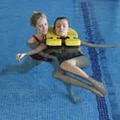Balance & Vertigo Treatment
What is Balance in Physiotherapy?
Balance is our ability to sustain an upright posture and stable position. There are 2 aspects to balance – static balance (when you are standing still) and dynamic balance (when you are moving around, reaching beyond your feet). Balance is important in all aspects of your life.
Having good balance means you won’t fall over, you can reach for things, you can enjoy walking whilst looking around and you can play sport. You’ll notice that kids will challenge their balance all the time, balancing on things in the environment, practising standing on 1 leg, hopping as part of games.
But as adults, we have a more sedentary existence and often don’t challenge our balance as part of everyday living. Over time, this causes a decrease in our balance, especially as we get older.


What body systems help us to balance?
There are 4 systems that combine to help us balance. These are:
Proprioception – This is the feedback we get from our joints and muscles and tells our brain where we are positioned. Our body awareness.
Visual – our vision helps to keep us balanced by helping to tell our brains where we are, and what is around us.
Vestibular – This is the system behind your ears, picture a coil filled with water. As you move, the water sloshes around in there and flows past little sensors which tell the brain where and how you are standing.
Muscular system – you need the strength in your muscles to be able to make little corrections to maintain your balance, or to make large corrections to prevent a fall or trip.
Why is my balance decreased?
As mentioned above, your balance will be decreased if you have not maintained all the systems. So, it may be due to a sedentary lifestyle (use it or lose it), or you’ve had an injury and haven’t completed your rehab including your balance exercises, or it may be due to a problem in one of the body areas that we have mentioned above.
Vertigo and BPPV
Vertigo is the sensation that you or the world around you is spinning. It can be associated with symptoms like nausea, vomiting, blurred vision and a loss of balance.
The most common cause of vertigo is a condition called benign paroxysmal positional vertigo, or BPPV for short.


Inside the inner ear, there is an organ called the vestibular labyrinth. Within the labyrinth are the semicircular canals, which are filled with fluid and have hair-like sensors that detect the movement of the fluid thereby telling the brain what position the head is in. Inside the labyrinth, there are also collections of calcium crystals called otoconia or otoliths.
This is normal. However, in people with BPPV, these crystals dislodge from their normal positions and end up in the semicircular canals. The extra weight of these crystals in the fluid, or the lodging of these crystals onto the hairlike filaments in the semicircular canals causes abnormal movement of the fluid and stimulation of the hairlike sensors causing confusion to the brain and resulting in a feeling of dizziness or vertigo.
People with this condition often report vertigo when performing specific head movements like getting up from bed or turning their neck. Nausea and vomiting are also common symptoms. Nystagmus – where the eye flicks repeatedly to the affected ear occurs during provoking movements.
Treating BPPV and Vertigo
But you don’t have to put up with these symptoms. BPPV is easy to diagnose and just as easy to treat. We diagnose BPPV by listening to your history, and then performing some tests, including the Dix-Hallpike test. It usually responds quickly to treatment using a simple exercise that we can teach you.
Our Services
Our expert physiotherapists are trained to assess your hip or groin pain and determine the cause. They can also screen sporting people/athletes for risk factors and teach/recommend preventative injury programs. The services that will help you prevent or recover from your hip pain are:

Physiotherapy

Remedial Massage

Shockwave Therapy

Dry Needling

Pilates

Hydrotherapy

Gym Programs

